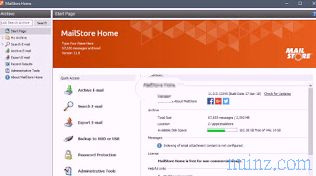 Each operating system password can be reset or bypassed, at least on modern computers and smartphones.
Each operating system password can be reset or bypassed, at least on modern computers and smartphones. It's not about hacking or who knows what computer magic. It is a known fact that on Windows, Linux and Mac OS X the password does not actually prevent access to the computer files and it is possible to enter by resetting the password or even bypassing the request .
On other devices such as the iPhone or an Android smartphone, where you cannot get access to the files, you can still reset the device to use it without knowing the password . This means that if you get hold of a computer or smartphone you can always access it. The only requirement for this guide is to have physical access to the device you want to use.
WINDOWS
There are many ways to reset your Windows login password and we've seen them in other guides. Meanwhile, Windows allows you to create a password reset disk that can be used in an emergency by the administrator or owner of the computer.The recovery of a password, even without having a recovery disc, is still quite simple thanks to special programs such as Offline NT Password & Registry Editor.
You then create a CD or a USB stick that can be booted with this program inside it, start the PC from the USB drive or from the DVD player and, automatically, the password is reset. Even if you are using Windows 10 with a Microsoft account, you can always reset the administrator password of the default account.
In other articles we have seen:
- How to find the access passwords (login) on Windows PC also as administrator
- How to reset the Windows user password to access the PC
To protect yourself from this trick you can put a password in the BIOS or you can limit the boot of the computer from external devices (always from BIOS).
If you really want to protect files on your computer, it is better to use a tool like Bitlocker
READ ALSO: Access any Windows 10, 7 and 8 PC with administrator login and password
LINUX
Taking Ubuntu as an example, you will find a recovery mode in its default boot menu (Grub). From the advanced options, select the recovery mode to see this boot menu. You can also bring up the boot menu by holding down the Shift key while starting the computer. From here you can open a root shell.In this illustrated guide, all the steps to reset and change passwords on Linux.
If the Grub boot menu is also locked and password protected, you can still start Linux Live Media and change the password.
MAC OS X
On Macs there is an internal password reset tool that is very easy to reach. This option is available in recovery mode. Restart the Mac from the Apple menu and then press and hold the C ommand + R keys when the computer starts to enter recovery mode.From the Utilities menu, select Terminal, type ResetPassword in the terminal and press Enter.
You can then reset the password of any user account on the Mac.
The same tool is accessible from a Mac OS X installation disc (guide).
To prevent the Mac password from being reset, you can enable FileVault disk encryption on the Mac and set a recovery mode firmware password.
CHROME OS
A Google Account is used on Chromebook laptops .You can then reset your Google Account password.
If you want to use a Chromebook without knowing the password, instead you can do the "Powerwash" which is a complete system reset.
To do this, press the Ctrl + Shift + Alt + R keys at the same time.
After the factory reset, you can log in with another Google Account.
There is no way to access a user's files without the login password on a Chromebook because the files are encrypted by default.
ANDROID
If you forget the lock screen code of an Android smartphone or tablet such as the Samsung Galaxy or Nexus 7, you can easily reset it. Just make a mistake 5 times and then tap on the writing on the bottom right " Forgot password ", " Forgot PIN ", or " forgotten sequence ". You can then regain access to the device by entering the username and password of the Google account associated with the device. If you don't know the password for the associated Google Account, there are other ways.For example, if USB Debugging was enabled on Android, you can connect the device to the computer and use ADB.
Therefore USB debugging is disabled by default.
Another solution is the factory reset of Android from recovery mode, deleting all internal data.
iOS
iPhone, iPad and iPod Touch have no way to reset their password. If you forget the password of an Apple iOS device, you will need to do a factory reset. ICloud-related data such as the address book and photos will be recoverable using the Apple account if you remember your password. There are several ways to reset the iPhone.If Find My iPhone was active, simply visit the iCloud website and clear the device memory from there.
If the device was backed up with iTunes on a computer, you can connect the device to the computer and restore the backup from iTunes. You can still reset an iPhone or iPad from recovery mode in this way: turn off the iPhone, press and hold the Home button, connect the USB cable of the device to the computer. If it doesn't turn on automatically, turn it on and iTunes will detect a device in recovery mode.
Having said all this, I want to say that passwords are always important and indispensable to protect computers and cellphones from unauthorized access.
Bypassing passwords can be easy only if you have physical access to the device, otherwise it's film stuff.
Conversely, if someone can touch our computer or device by hand and wants to reset the password to access it, there will be nothing that can be done to stop it. Even file encryption only serves to protect personal data from prying eyes but not to prevent the use of that computer.
FOR THESE REASONS READ ALSO:
- Anti - theft device for a laptop and USB sticks that locates the stolen computer and locks it
- Lost smartphone: all things to do

















